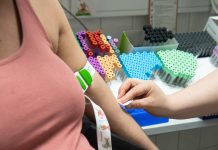Researchers have now developed an accurate method of predicting the probability of developing diabetes in women following childbirth.

Gestational diabetes is one of the most common conditions that can occur during pregnancy. Although the symptoms generally disappear after delivery, women suffering from gestational diabetes are at increased risk of developing postpartum diabetes in the following years.
Researchers at the Helmholtz Zentrum München have now developed an accurate method of predicting the probability of developing this progressive disease following childbirth. Their findings were published recently in ‘Acta Diabetologica’.
For their study, the scientists from the Institute of Diabetes Research (IDF), Helmholtz Zentrum München, which is one of the partners of the German Center for Diabetes Research (DZD), collected data from 257 cases of gestational diabetes (a type of diabetes that affects women during pregnancy) which occurred between 1989 and 1999 and were followed up for a period of 20 years after delivery.
One hundred and ten of the women observed during this period developed postpartum diabetes. In order to be able to predict in which mother the disease would manifest itself after delivery, the team headed by Prof. Anette-Gabriele Ziegler, Director of the Institute of Diabetes Research, tested various parameters that are known to play a significant role in the genesis of the disease.
Continue Reading Below ↓↓↓
Personal Risk is Easy to Calculate
“Body mass index (BMI) and genetic predisposition both play a role in our calculation, as does the question of whether the mother breastfed her baby and whether her gestational diabetes had to be treated with insulin,” explains Meike Köhler, first author of the study.*
On the basis of these parameters, the researchers introduced a point system to enable them to predict a woman’s likelihood of developing postpartum diabetes. For low-risk scores, the probability of developing diabetes within five years after delivery was only about eleven percent; in the medium-risk category it ranged from 29 to 64 percent, while for the highest-risk scores it was more than 80 percent.
“The test we developed is very easy to apply and in the future could be used in hospitals as a tool for predicting postpartum diabetes,” Prof. Ziegler added. “This means that both the doctor and the patient are aware of the respective risk, and it allows diabetes checks to be more closely tailored to the patient’s individual needs.”
Background:
The exact risk score is calculated as follows: 5 x BMI (in early pregnancy) + 132 (if the gestational diabetes was treated with insulin) + 44 (if the woman had a family history of diabetes) – 35 (if the mother breastfed her baby). A score of less than/equal to 140 is regarded as low, and in purely arithmetical terms corresponds to a risk of about 11 percent of developing postpartum diabetes within five years. A medium score is between 141 and 220 and carries a risk of about 29 percent. Raised values (221-300) indicate a risk of 64 percent, while very high values (300 and above) indicate a roughly 80 percent risk of developing postpartum diabetes.
Original publication:
Koehler, M. et al. (2015). Development of a simple tool to predict the risk of postpartum diabetes in women with gestational diabetes mellitus, Acta Diabetologica, DOI: 10.1007/s00592-015-0814-0
Source: Helmholtz Zentrum München – German Research Center for Environmental Health
Journal: Acta Diabetologica










